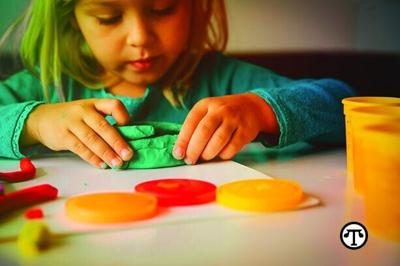By Alexis Treat
Ìý
Ìý
(NAPSI)—For school-aged kids, summer is about relaxing after a long school year and recharging for the next one. Playdates, pool time, or afternoons at the park may be some staple components of your family’s summer power-up. Reading should be as well. Research has shown that summers spent without exposure to reading can drain your child’s literacy battery—a phenomenon known as the summer slide. Here are some fun ways to ensure your children have enough reading juice to start the fall with their minds revving and ready for action!
Ìý
Ìý
Early Readers
Ìý
Ìý
Sound Hopscotch: Exercise your mind and body! For easy indoor or outdoor play that still gets your kids moving, write letters or letter pairs, such as ch, on sheets of paper and place them on the ground. Then have children say the sound the letter makes as they hop from one to the next. Bonus points if they think of a word that starts with the sound.
Ìý
Ìý
Go Fish: Help your reader identify the letters of the alphabet with uppercase/lowercase letter pairs. Make pairs of cards together, i.e. A/a, G/g, R/r. Then, shuffle the cards and play Go Fish! Urge them to share a word beginning with the letter after collecting a related pair. You can even up the ante by having them make a full sentence with the word.
Ìý
Ìý
Paper Chains: Summer break is a celebration of sorts, so why not decorate? Word chains are a set of words that change by one sound at a time, and word loops go one step further by starting and ending with the same word: bat --> bet --> bit --> big --> pig --> pin --> pit --> pat --> bat. Work together to write word chains on interlocking loops of paper to create a summer literacy garland.
Ìý
Ìý
Intermediate Readers
Ìý
Ìý
Side-by-Side Showdown: Try this fun project with your reader to help them compare and contrast—discern how things are alike and how they are different—like a pro. Have them illustrate a character from a novel, complete with details from the story. They should then draw themselves next to the character and label the two pictures to show what’s the same and what’s different. If this project is a hit, try it with characters from other books, movies, or TV shows.
Ìý
Ìý
Metaphorical Masterpieces: Figurative language—using words creatively in a non-literal way—can be tricky: It’s raining cats and dogs. You are my sunshine. She was as busy as a bee. Have your reader illustrate these and other examples, and talk about how they help authors create pictures in the minds of readers. Look for more figurative language examples each time you read together.
Ìý
Ìý
What Comes Next?: Authors use such words as first, next, after, while, now, then, before, and finally to describe a sequence of events. Have your reader narrate a video or podcast using sequence signal words while they follow a recipe or narrate other how-to’s like making a craft, learning a skill, or playing a game.
Ìý
Ìý
Fluent ReadersÌý
Ìý
Ìý
Authentic Audiobooks: Fluent readers sound as if they’re having a natural conversation as they read. Help your reader build fluency by working together to select informational articles or short stories to read aloud. Have them practice reading clearly and with expression. Then, encourage them to record themselves to create audiobooks for friends and family.
Ìý
Ìý
Poetic Rhythms: Reading a poem aloud imparts the power of rhythm and rhyme. Have kids create a beat to go with a fun poem. (Just tapping on a table will work.) Then, they can record themselves reading the poem in rhythm with the beat. Challenge other family members to try as well, and host a poetry slam.
Ìý
Ìý
Map New Worlds: Travel to far-off places even when you can’t leave home! Have your reader create a map of a fictional setting from a favorite book. Encourage them to include details from the story and have fun talking about different parts of the map. You can challenge your child to create a map for a setting from their imagination and have them write a story to go with it, or even set up a live 3-D map to navigate in an outdoor space.
Ìý
Ìý
Just as a battery powers a device, reading over the summer keeps young minds engaged and active, preventing a summer slide and loss of skills. As children absorb new words, ideas, and perspectives, they build up the charge they need to return to school confident and ready to learn. You can visit Lexia’s Summer Literacy Activities page for more fun science of reading-based activities to restore and boost your child’s academic energy. Whatever you choose to do, may you enjoy a summer filled with sun, fun, and reading games.
Ìý
Ìý
Alexis Treat is a certified speech-language pathologist and currently serves as the Senior Director of Curriculum & Resources at Lexia. For more than 40 years, Lexia has been a thought leader in literacy education, delivering award-winning, research-based solutions grounded in the science of reading.Ìý
Ìý
Word Count: 812
Ìý
Ìý
Ìý










